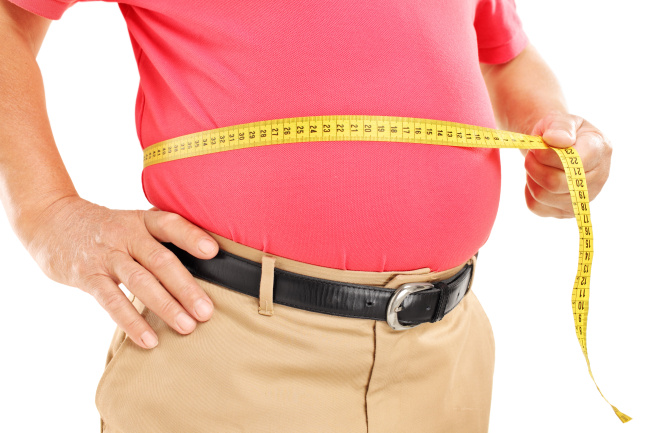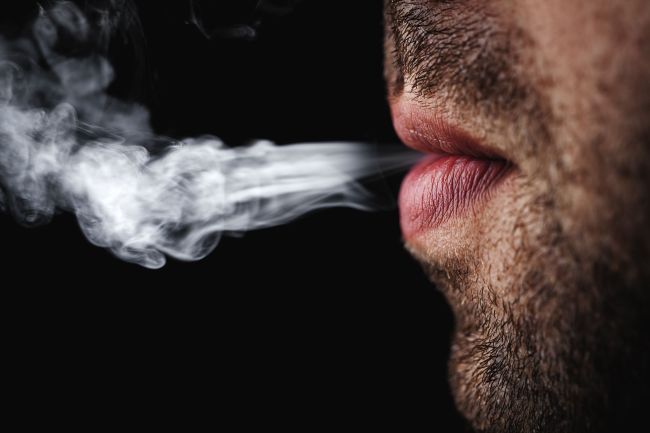One in 3 South Koreans are obese, a record-high 23.2 percent of women are heavy drinkers and the male smoking rate has dropped to an all-time low, according to fresh statistics.
These are the key findings of the annual Korea National Health and Nutrition Examination Survey, to be released Monday by the Center for Disease Control and Prevention.
This year’s report has revealed some worrying trends in Koreans’ overall lifestyle and diet patterns.
These are the key findings of the annual Korea National Health and Nutrition Examination Survey, to be released Monday by the Center for Disease Control and Prevention.
This year’s report has revealed some worrying trends in Koreans’ overall lifestyle and diet patterns.

Obesity has increased markedly for men, found the report, particularly among those aged 30-39. The male obesity rate stood at 39.7 percent in 2015, a 5 percentage point increase from a decade ago. For those in their 30s, the figure increased from 38.1 percent to 43.6 percent over the 10-year period.
For women, the obesity rate fell slightly from 27.3 percent in 2005 to 26 percent in 2015.
Forty-one percent of Koreans “walk regularly” --- walking five days a week for at least 30 minutes per day and more than 10 minutes at a time. A decade ago, the ratio was 60.7 percent.
As for alcohol consumption, more than half of Korean men are heavy drinkers, which are defined by drinking more than seven glasses of soju at one sitting at least once a month for the past year.
For women, the bar is lower at five glasses of soju, and the survey showed that 23.2 percent of them belong to this category.
For women, the obesity rate fell slightly from 27.3 percent in 2005 to 26 percent in 2015.
Forty-one percent of Koreans “walk regularly” --- walking five days a week for at least 30 minutes per day and more than 10 minutes at a time. A decade ago, the ratio was 60.7 percent.
As for alcohol consumption, more than half of Korean men are heavy drinkers, which are defined by drinking more than seven glasses of soju at one sitting at least once a month for the past year.
For women, the bar is lower at five glasses of soju, and the survey showed that 23.2 percent of them belong to this category.

The number of female heavy drinkers have been growing, but the 23.2 percent of 2015 is a new record. It also marks an increase of 6 percentage points from a decade ago.
The smoking rate among men dropped to a record low in 2015, dipping below 40 percent for the first time.
About 39.3 percent of Korean men aged 19 or older were smokers last year, down 3.8 percentage points from the previous year’s 43.1 percent. That marks the lowest level since the data began to be complied in 1998.
The male smoking rate has been declining since peaking at 66.3 percent in 1998. The number fell below 50 percent by 2007 and continued to fall, reaching 42.1 percent in 2013. The exception was 2014 when it rebounded to 43.1 percent.
The smoking rate among men dropped to a record low in 2015, dipping below 40 percent for the first time.
About 39.3 percent of Korean men aged 19 or older were smokers last year, down 3.8 percentage points from the previous year’s 43.1 percent. That marks the lowest level since the data began to be complied in 1998.
The male smoking rate has been declining since peaking at 66.3 percent in 1998. The number fell below 50 percent by 2007 and continued to fall, reaching 42.1 percent in 2013. The exception was 2014 when it rebounded to 43.1 percent.

The percentage of teenage smokers has also declined, dropping from 14.3 percent in 2005 to hit 9.6 percent in 2015 -- the first time it recorded a figure below 10 percent.
“The decline in the numbers of male and teenage smokers are attributable to anti-smoking policies such as expanding non-smoking areas and raising cigarette prices,” the Health Ministry explained.
The male smoking rate includes those who have smoked more than five packs or 100 cigarettes in their lifetime and are still smoking. For teenagers, the rate is calculated by counting those who have smoked at least once in the recent month.
By Jo He-rim (herim@heraldcorp.com)
“The decline in the numbers of male and teenage smokers are attributable to anti-smoking policies such as expanding non-smoking areas and raising cigarette prices,” the Health Ministry explained.
The male smoking rate includes those who have smoked more than five packs or 100 cigarettes in their lifetime and are still smoking. For teenagers, the rate is calculated by counting those who have smoked at least once in the recent month.
By Jo He-rim (herim@heraldcorp.com)
-
Articles by Korea Herald


![[Exclusive] Korean military set to ban iPhones over 'security' concerns](http://res.heraldm.com/phpwas/restmb_idxmake.php?idx=644&simg=/content/image/2024/04/23/20240423050599_0.jpg&u=20240423183955)

![[Graphic News] 77% of young Koreans still financially dependent](http://res.heraldm.com/phpwas/restmb_idxmake.php?idx=644&simg=/content/image/2024/04/22/20240422050762_0.gif&u=)



![[Pressure points] Leggings in public: Fashion statement or social faux pas?](http://res.heraldm.com/phpwas/restmb_idxmake.php?idx=644&simg=/content/image/2024/04/23/20240423050669_0.jpg&u=)










